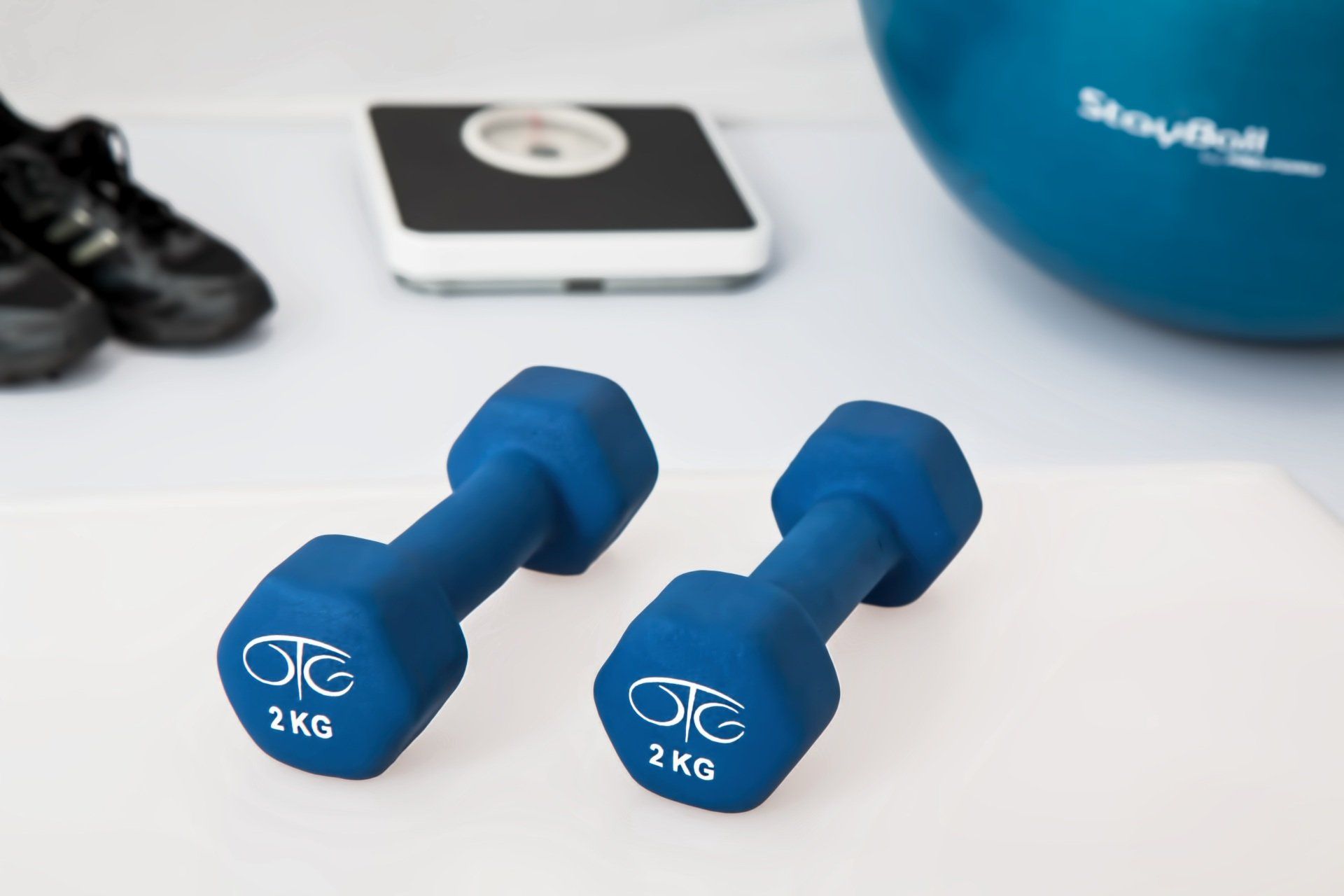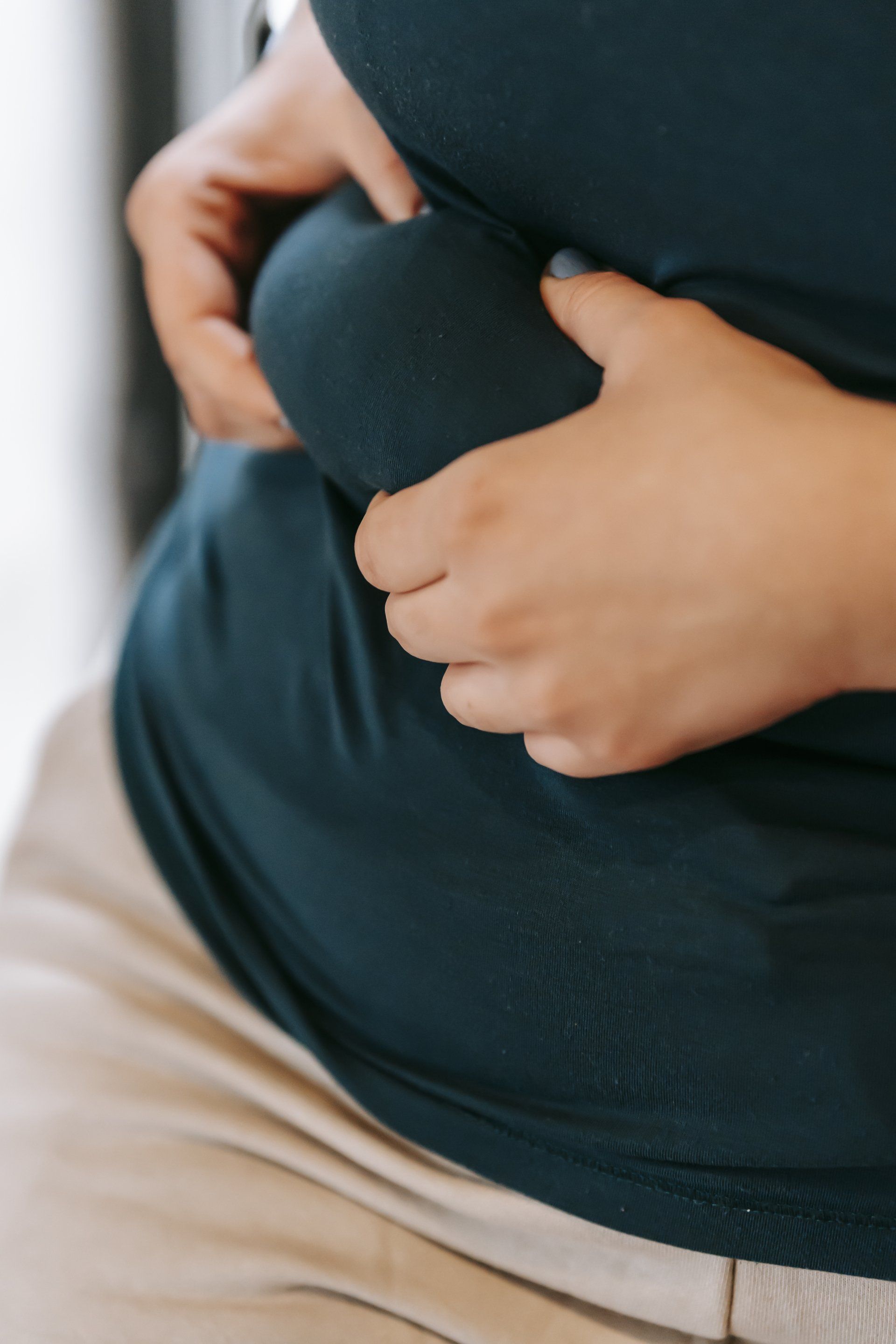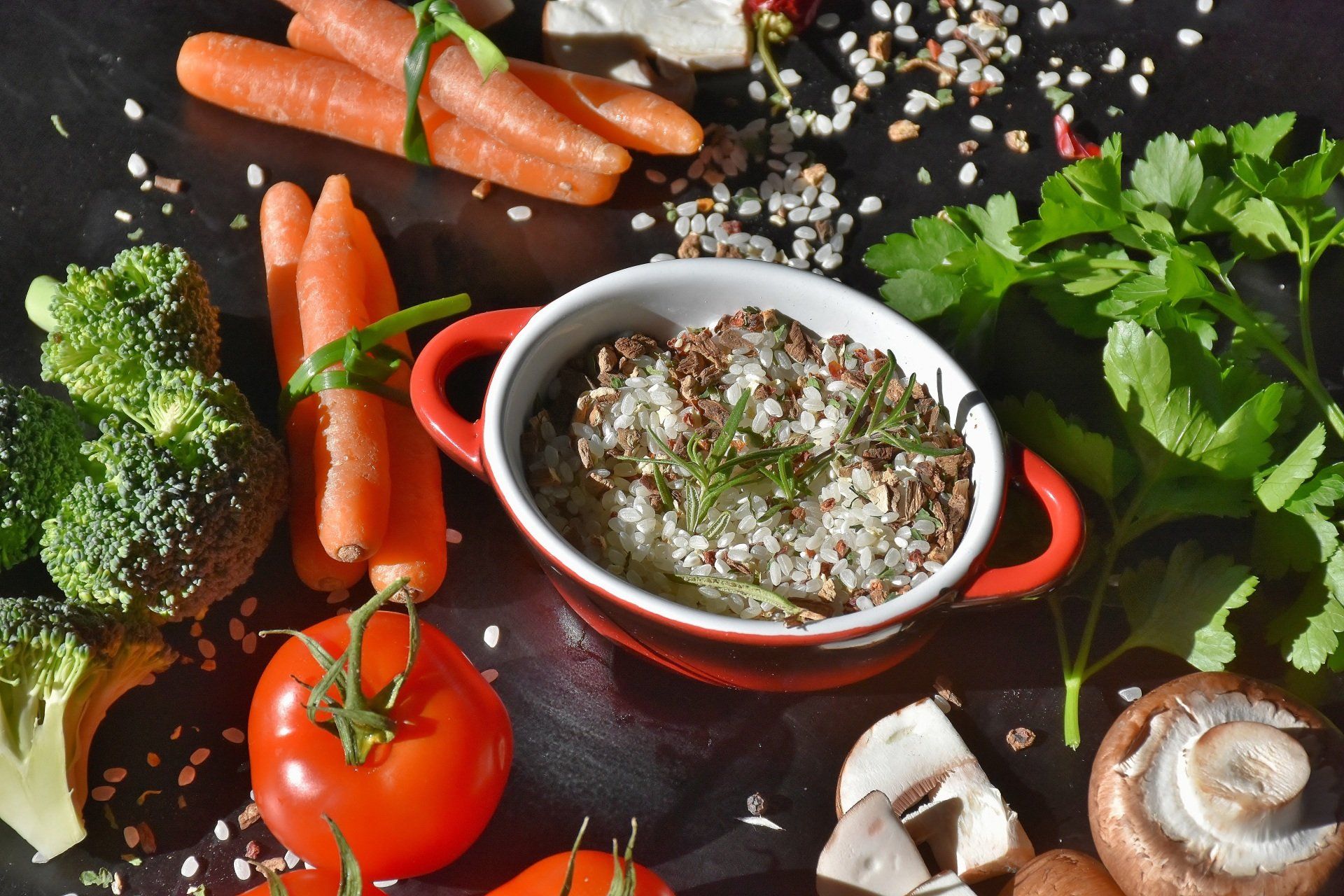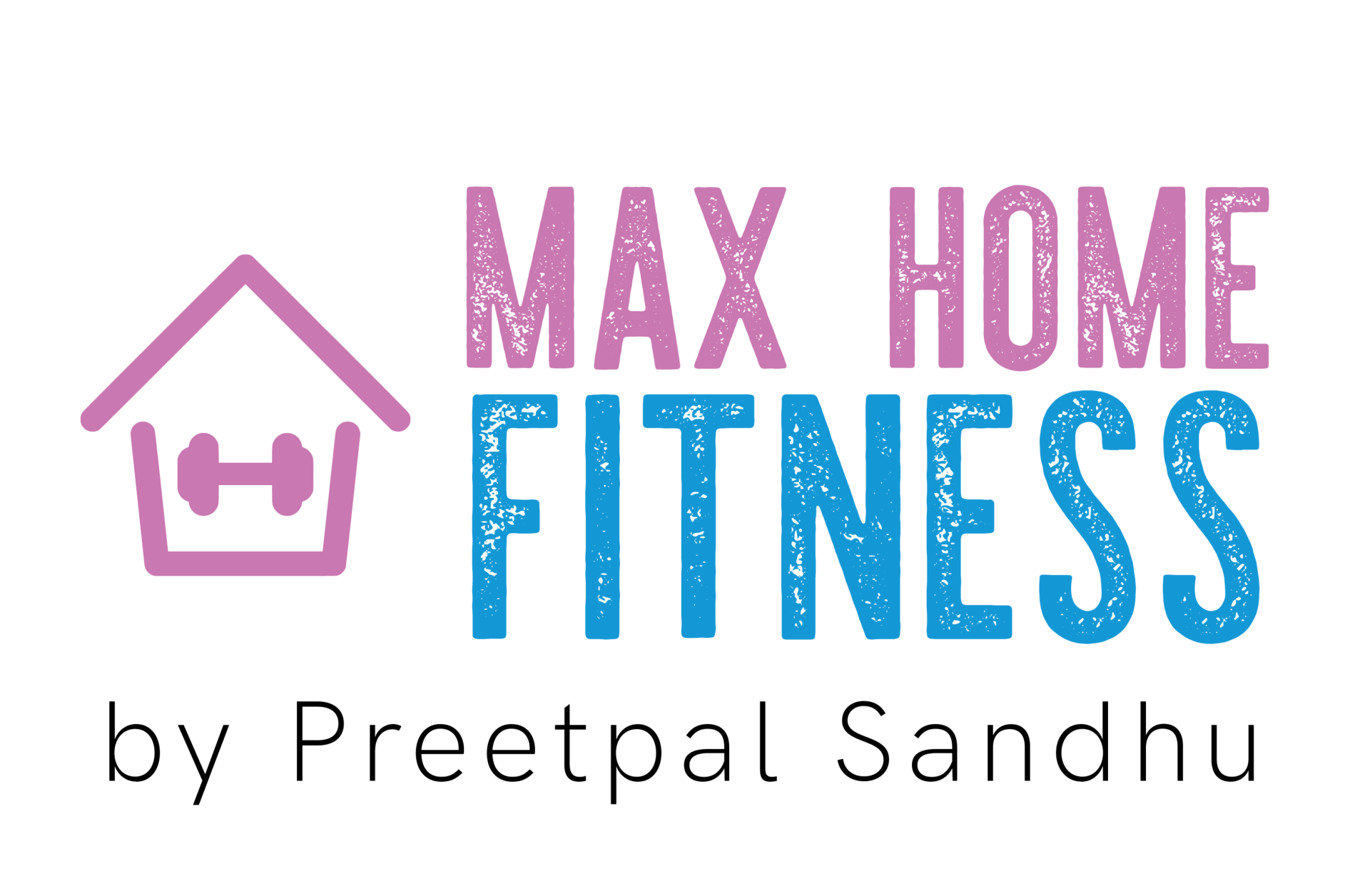The Top 8 Benefits of Regular Exercise
Arlene Semeco, MS, RD • October 28, 2021
The Top 8 Benefits of Regular Exercise
Exercise is defined as any movement that makes your muscles work and requires your body to burn calories.
There are many types of physical activity, including swimming, running, jogging, walking, and dancing, to name a few.
Being active has been shown to have many health benefits, both physically and mentally. It may even help you live longer.
Here are the top 8 ways regular exercise benefits your body and brain.
1. It can makes you feel happier
Exercise has been shown to improve your mood and decrease feelings of depression, anxiety, and stress.
It produces changes in the parts of the brain that regulate stress and anxiety. It can also increase brain sensitivity for the hormones serotonin and norepinephrine, which relieve feelings of depression.
Additionally, exercise can increase the production of endorphins, which are known to help produce positive feelings and reduce the perception of pain.
Furthermore, exercise has been shown to reduce stress and improve symptoms of anxiety.
Interestingly, it doesn’t matter how intense your workout is. It seems that your mood can benefit from exercise no matter the intensity of the physical activity.
The effects of exercise on mood are so powerful that choosing to exercise (or not) even makes a difference over short periods. Active people who stopped exercising regularly experienced significant increases in symptoms of depression and anxiety, even after only a few weeks.
2. It can helps with weight loss
Inactivity is a major factor in weight gain and obesity.
To understand the effect of exercise on weight reduction, it is important to understand the relationship between exercise and energy expenditure.
Your body spends energy in three ways:
- digesting food
- exercising
- maintaining body functions like your heartbeat and breathing
While dieting, a reduced calorie intake will lower your metabolic rate, which can delay weight loss. On the contrary, regular exercise has been shown to increase your metabolic rate, which can burn more calories to help you lose weight.
Combining aerobic exercise with resistance training can maximize fat loss and muscle mass maintenance, which is essential for keeping the weight off.
3. It is good for your muscles and bones
Exercise plays a vital role in building and maintaining strong muscles and bones.
Activities like weightlifting can stimulate muscle building when paired with adequate protein intake.
This is because exercise helps release hormones that promote the ability of your muscles to absorb amino acids. This helps them grow and reduces their breakdown.
As people age, they tend to lose muscle mass and function, which can lead to an increased risk of injury. Practicing regular physical activity is essential to reducing muscle loss and maintaining strength as you age.
Also, exercise helps build bone density when you’re younger, in addition to helping prevent osteoporosis later in life.
Interestingly, some research suggests that high impact exercise, such as gymnastics or running, or odd impact sports, such as soccer and basketball, may help promote a higher bone density than non-impact sports like swimming and cycling.
SUMMARY
Physical activity helps you build muscles and strong bones. It may also help prevent osteoporosis.
4. It can increases your energy level
Exercise can be a real energy booster for many people, including those with various medical conditions.
6 weeks of regular exercise reduced feelings of fatigue for 36 people who had reported persistent fatigue.
Furthermore, exercise can significantly increase energy levels for people with chronic fatigue syndrome (CFS) and other serious illnesses.
In fact, exercise seems to be more effective at combating CFS than other treatments, including passive therapies like relaxation and stretching or no treatment at all.
Additionally, exercise has been shown to increase energy levels in people with other conditions like cancer.
SUMMARY
Engaging in regular physical activity can increase your energy levels. This is true even in people with persistent fatigue and those with serious health conditions.
5. It can reduces your risk of chronic disease
Lack of regular physical activity is a primary cause of chronic disease.
Regular exercise has been shown to improve insulin sensitivity, heart health, and body composition. It can also decrease blood pressure and cholesterol levels.
In contrast, a lack of regular exercise — even in the short term — can lead to significant increases in belly fat, which may increase the risk of type 2 diabetes and heart disease.
That’s why regular physical activity is recommended to reduce belly fat and decrease the risk of developing these conditions.
SUMMARY
Daily physical activity is essential to maintaining a healthy weight and reducing the risk of chronic disease.
6. It can helps skin health
Your skin can be affected by the amount of oxidative stress in your body.
Oxidative stress occurs when the body’s antioxidant defenses cannot completely repair the cell damage caused by compounds known as free radicals. This can damage the structure of the cells and negatively impact your skin.
Even though intense and exhaustive physical activity can contribute to oxidative damage, regular moderate exercise can actually increase your body’s production of natural antioxidants, which help protect cells.
In the same way, exercise can stimulate blood flow and induce skin cell adaptations that can help delay the appearance of skin aging.
SUMMARY
Moderate exercise can provide antioxidant protection and promote blood flow, which can protect your skin and delay signs of aging.
7. It can helps your brain health and memory
Exercise can improve brain function and protect memory and thinking skills.
To begin with, it increases your heart rate, which promotes the flow of blood and oxygen to your brain. It can also stimulate the production of hormones that enhance the growth of brain cells.
Plus, the ability of exercise to prevent chronic disease can translate into benefits for your brain, since its function can be affected by these diseases.
Regular physical activity is especially important in older adults since aging — combined with oxidative stress and inflammation — promotes changes in brain structure and function.
Exercise has been shown to cause the hippocampus, a part of the brain that’s vital for memory and learning, to grow in size, which may help improve mental function in older adults.
Lastly, exercise has been shown to reduce changes in the brain that can contribute to conditions like Alzheimer’s disease and schizophrenia.
SUMMARY
Regular exercise improves blood flow to the brain and helps brain health and memory. Among older adults, it can help protect mental function.
8. It can helps with relaxation and sleep quality
Regular exercise can help you relax and sleep better.
With regard to sleep quality, the energy depletion that occurs during exercise stimulates recuperative processes during sleep.
Moreover, the increase in body temperature that occurs during exercise is thought to improve sleep quality by helping it drop during sleep.
One review of six studies found that participating in an exercise training program helped improve self-reported sleep quality and reduced sleep latency, which is the amount of time it takes to fall asleep.
Another older study showed that 16 weeks of physical activity improved sleep quality and helped 17 people with insomnia sleep longer and more deeply than the control group. It also helped them feel more energized during the day.
What’s more, engaging in regular exercise seems to be beneficial for older adults, who are often affected by sleep disorders.
You can be flexible with the kind of exercise you choose. It appears that either aerobic exercise alone or aerobic exercise combined with resistance training can both improve sleep quality.
SUMMARY
Regular physical activity, regardless of whether it is aerobic or a combination of aerobic and resistance training, can help you sleep better and feel more energized during the day.
Credit Source: www.healthline.com

In today's fast-paced world, finding time to hit the gym or engage in outdoor activities can be challenging. However, staying fit and healthy doesn't have to be complicated or require expensive equipment. With the convenience of exercising at home, you can achieve your fitness goals without leaving your comfort zone. In this blog, we'll explore five top exercises that will help you get fitter right in the comfort of your own home. High-Intensity Interval Training (HIIT): HIIT workouts are incredibly effective for improving cardiovascular fitness and burning calories in a short amount of time. The beauty of HIIT is that it can be customized to suit your fitness level. Choose exercises such as burpees, jumping jacks, mountain climbers, or squat jumps, and perform them at maximum intensity for 30 seconds, followed by a 10-15 second rest. Repeat this cycle for 15-20 minutes, and you'll experience an intense full-body workout that boosts your metabolism and improves endurance. Bodyweight Strength Training: Strength training is crucial for building lean muscle mass, improving bone density, and increasing overall strength. You can achieve significant results using your own body weight as resistance. Classic exercises like push-ups, squats, lunges, planks, and tricep dips can be performed at home with no equipment. Aim for three sets of 12-15 repetitions for each exercise, gradually increasing the intensity as you progress. To add variety, consider incorporating variations like diamond push-ups, pistol squats, or single-leg glute bridges. Yoga: Yoga not only improves flexibility but also enhances mental well-being. With numerous online resources and apps offering guided yoga sessions, you can easily practice yoga at home. Set aside 20-30 minutes each day for a yoga routine that includes poses like downward dog, warrior, tree pose, and child's pose. Yoga helps strengthen your core, improves balance, reduces stress, and promotes relaxation. Incorporating a regular yoga practice into your fitness routine will bring both physical and mental benefits. Skipping Rope: Skipping rope might seem like a childhood pastime, but it's a fantastic cardiovascular exercise that burns calories and improves coordination. All you need is a sturdy skipping rope and enough space to jump. Start with a warm-up and then jump rope for 1-2 minutes, followed by a short rest period. Repeat this cycle for 10-15 minutes. As you progress, try incorporating different jump variations, such as high knees, double unders, or cross-overs. Skipping rope is an excellent option for a quick and effective workout that can be done anywhere in your home. Cardio Dance Workouts: If you enjoy dancing, cardio dance workouts are a fun way to get your heart pumping while improving coordination and endurance. Numerous online platforms offer dance fitness routines that cater to various styles and skill levels. Choose a dance style that interests you, such as Zumba, hip-hop, or salsa, and follow along with the instructor. These workouts not only provide a fantastic cardio session but also uplift your mood and make exercise enjoyable. Conclusion: Getting fitter at home is both achievable and convenient. By incorporating these top five exercises into your routine, you can build strength, improve cardiovascular fitness, enhance flexibility, and boost your overall well-being. Remember to start at your own pace, gradually increasing the intensity as you progress. With commitment and consistency, your home can become your personal fitness sanctuary, bringing you closer to your health and fitness goals. So, lace up your shoes, roll out your yoga mat, and let's get fitter right at home!

We include products we think are useful for our readers. If you buy through links on this page, we may earn a small commission. Here’s our process. There is a lot of bad weight loss information on the internet. Much of what is recommended is questionable at best, and not based on any actual science. However, there are several natural methods that have actually been proven to work. Here are 20 easy ways to lose weight naturally. 1. Add Protein to Your Diet When it comes to weight loss, protein is the king of nutrients. Your body burns calories when digesting and metabolizing the protein you eat, so a high-protein diet can boost metabolism by up to 80–100 calories per day. A high-protein diet can also make you feel more full and reduce your appetite. In fact, some studies show that people eat over 400 fewer calories per day on a high-protein diet. Even something as simple as eating a high-protein breakfast (like eggs) can have a powerful effect. 2. Eat Whole, Single-Ingredient Foods One of the best things you can do to become healthier is to base your diet on whole, single-ingredient foods. By doing this, you eliminate the vast majority of added sugar, added fat and processed food. Most whole foods are naturally very filling, making it a lot easier to keep within healthy calorie limits. Furthermore, eating whole foods also provides your body with the many essential nutrients that it needs to function properly. Weight loss often follows as a natural side effect of eating whole foods. 3. Avoid Processed Foods Processed foods are usually high in added sugars, added fats and calories. What’s more, processed foods are engineered to make you eat as much as possible. They are much more likely to cause addictive-like eating than unprocessed foods. 4. Stock Up on Healthy Foods and Snacks Food you keep at home greatly affects weight and eating behavior. By always having healthy food available, you reduce the chances of you or other family members eating unhealthy. There are also many healthy and natural snacks that are easy to prepare and take with you on the go. These include yogurt, whole fruit, nuts, carrots, and hard-boiled eggs. 5. Limit Your Intake of Added Sugar Eating a lot of added sugar is linked with some of the world’s leading diseases, including heart disease, type 2 diabetes and cancer. Since sugar goes by many names in ingredient lists, it can be very difficult to figure out how much sugar a product actually contains. Minimizing your intake of added sugar is a great way to improve your diet. 6. Drink Water There is actually truth to the claim that drinking water can help with weight loss. Drinking 0.5 liters (17 oz) of water may increase the calories you burn by 24–30% for an hour afterward. Drinking water before meals may also lead to reduced calorie intake, especially for middle-aged and older people. Water is particularly good for weight loss when it replaces other beverages that are high in calories and sugar. 7. Avoid Liquid Calories Liquid calories come from beverages like sugary soft drinks, fruit juices, chocolate milk and energy drinks. These drinks are bad for health in several ways, including an increased risk of obesity. A drastic 60% increase in the risk of obesity among children, for each daily serving of a sugar-sweetened beverage. It’s also important to note that your brain does not register liquid calories the same way it does solid calories, so you end up adding these calories on top of everything else that you eat. 8. Limit Your Intake of Refined Carbs Refined carbs are carbs that have had most of their beneficial nutrients and fiber removed. The refining process leaves nothing but easily digested carbs, which can increase the risk of overeating and disease. The main dietary sources of refined carbs are white flour, white bread, white rice, sodas, pastries, snacks, sweets, pasta, breakfast cereals, and added sugar. 9. Fast Intermittently Intermittent fasting is an eating pattern that cycles between periods of fasting and eating. There are a few different ways to do intermittent fasting, including the 5:2 diet, the 16:8 method and the eat-stop-eat method. Generally, these methods make you eat fewer calories overall, without having to consciously restrict calories during the eating periods. This should lead to weight loss, as well as numerous other health benefits. 10. Eat More Fruits and Vegetables Fruits and vegetables are extremely healthy, weight-loss-friendly foods. In addition to being high in water, nutrients and fiber, they usually have very low energy density. This makes it possible to eat large servings without consuming too many calories. Numerous studies have shown that people who eat more fruits and vegetables tend to weigh less. 11. Count Calories Once in a While Being aware of what you’re eating is very helpful when trying to lose weight. There are several effective ways to do this, including counting calories, keeping a food diary or taking pictures of what you eat. Using an app or another electronic tool may be even more beneficial than writing in a food diary. 12. Use Smaller Plates Using smaller plates helps you eat less, because it changes how you see portion sizes. People seem to fill their plates the same, regardless of plate size, so they end up putting more food on larger plates than smaller ones. Using smaller plates reduces how much food you eat, while giving you the perception of having eaten more. 13. Try a Low-Carb Diet That low-carb diets are very effective for weight loss. Limiting carbs and eating more fat and protein reduces your appetite and helps you eat fewer calories. This can result in weight loss that is up to 3 times greater than that from a standard low-fat diet. A low-carb diet can also improve many risk factors for disease. 14. Eat More Slowly If you eat too fast, you may eat way too many calories before your body even realizes that you are full. Faster eaters are much more likely to become obese, compared to those who eat more slowly. Chewing more slowly may help you eat fewer calories and increase the production of hormones that are linked to weight loss. 15. Add Eggs to Your Diet Eggs are the ultimate weight loss food. They are cheap, low in calories, high in protein and loaded with all sorts of nutrients. High-protein foods have been shown to reduce appetite and increase fullness, compared to foods that contain less protein. Furthermore, eating eggs for breakfast may cause up to 65% greater weight loss over 8 weeks, compared to eating bagels for breakfast. It may also help you eat fewer calories throughout the rest of the day. 16. Spice Up Your Meals Chili peppers and jalapenos contain a compound called capsaicin, which may boost metabolism and increase the burning of fat. Capsaicin may also reduce appetite and calorie intake. 17. Take Probiotics Probiotics are live bacteria that have health benefits when eaten. They can improve digestive health and heart health, and may even help with with weight loss. Overweight and obese people tend to have different gut bacteria than normal-weight people, which may influence weight. Probiotics may help regulate the healthy gut bacteria. They may also block the absorption of dietary fat, while reducing appetite and inflammation. Of all the probiotic bacteria, Lactobacillus gasseri shows the most promising effects on weight loss. 18. Get Enough Sleep Getting enough sleep is incredibly important for weight loss, as well as to prevent future weight gain. Sleep-deprived people are up to 55% more likely to become obese, compared to those who get enough sleep. This number is even higher for children. This is partly because sleep deprivation disrupts the daily fluctuations in appetite hormones, leading to poor appetite regulation. 19. Eat More Fiber Fiber-rich foods may help with weight loss. Foods that contain water-soluble fiber may be especially helpful, since this type of fiber can help increase the feeling of fullness. Fiber may delay stomach emptying, make the stomach expand and promote the release of satiety hormones. Ultimately, this makes us eat less naturally, without having to think about it. Furthermore, many types of fiber can feed the friendly gut bacteria. Healthy gut bacteria have been linked with a reduced risk of obesity. Just make sure to increase your fiber intake gradually to avoid abdominal discomfort, such as bloating, cramps and diarrhea. 20. Combat Your Food Addiction Food addiction involves overpowering cravings and changes in your brain chemistry that make it harder to resist eating certain foods. This is a major cause of overeating for many people, and affects a significant percentage of the population. In fact, a recent 2014 almost 20% of people fulfilled the criteria for food addiction. Some foods are much more likely to cause symptoms of addiction than others. This includes highly processed junk foods that are high in sugar, fat or both. The best way to beat food addiction is to seek help. Credit Source: www.healthline.com

Let’s face it — there’s an overwhelming amount of information on the Internet about how to quickly shed pounds and get in shape. If you’re looking for the best tips on how to lose weight and keep it off, this seemingly endless amount of advice can be overwhelming and confusing. From the diets promoting raw foods to meal plans that revolve around shakes and prepackaged foods, a new fad diet seems to pop up every day. The problem is, although very restrictive diets and elimination meal plans will most likely result in short-term weight loss, most people can’t maintain them and end up throwing in the towel within a few weeks. Although losing 10 pounds (4.5 kg) in a week by following a fad diet may seem tempting, the reality is that this type of weight loss is often unhealthy and unsustainable. The real key to safe and successful weight loss is to adopt a healthy lifestyle that suits your individual needs and that you can maintain for life. The following tips are healthy, realistic ways to get you back on track and headed towards your weight and fitness goals. Here are 25 of the best dieting tips to improve your health and help you lose weight. 1. Fill up on Fiber Fiber is found in healthy foods including vegetables, fruits, beans and whole grains. Simply eating more fiber-rich foods may help you lose weight and keep it off. Increasing your intake is as easy as adding beans to your salad, eating oats for breakfast or snacking on fiber-rich nuts and seeds. 2. Ditch Added Sugar Added sugar, especially from sugary drinks, is a major reason for unhealthy weight gain and health problems like diabetes and heart disease. Plus, foods like candy, soda and baked goods that contain lots of added sugars tend to be very low in the nutrients your body needs to stay healthy. Cutting out foods high in added sugars is a great way to lose excess weight. It’s important to note that even foods promoted as “healthy” or “organic” can be very high in sugar. Therefore, reading nutrition labels is a must. 3. Make Room for Healthy Fat While fat is often the first thing that gets cut when you’re trying to slim down, healthy fats can actually help you reach your weight loss goals. In fact, following a high-fat diet that’s rich in foods like olive oil, avocados and nuts has been shown to maximize weight loss . What’s more, fats help you stay fuller for longer, decreasing cravings and helping you stay on track. 4. Minimize Distractions While consuming meals in front of your TV or computer may not seem like diet sabotage, eating while distracted may cause you to consume more calories and gain weight. Eating at the dinner table, away from potential distractions, is not only a good way to keep your weight down — it also allows you time to reconnect with loved ones. Smartphones are another device you should set aside while you’re eating. Scrolling through emails or your Instagram or Facebook feed is just as distracting as a TV or computer. 5. Walk Your Way to Health Many people believe they must adopt a rigorous exercise routine to jumpstart weight loss. While different types of activity are important when you’re attempting to get in shape, walking is an excellent and easy way to burn calories. In fact, just 30 minutes of walking per day has been shown to aid in weight loss . Plus, it’s an enjoyable activity that you can do both indoors and outside at any time of day. 6. Bring out Your Inner Chef Cooking more meals at home has been shown to promote weight loss and healthy eating. Although eating meals at restaurants is enjoyable and can fit into a healthy diet plan, focusing on cooking more meals at home is a great way to keep your weight in check. What’s more, preparing meals at home allows you to experiment with new, healthy ingredients while saving you money at the same time. 7. Have a Protein-Rich Breakfast Including protein-rich foods like eggs in your breakfast has been shown to benefit weight loss. Simply swapping your daily bowl of cereal for a protein-packed scramble made with eggs and sautéed veggies can help you shed pounds. Increasing protein intake in the morning may also help you avoid unhealthy snacking and improve appetite control throughout the day. 8. Don’t Drink Your Calories While most people know they should avoid sodas and milkshakes, many people don’t realize that even drinks advertised to boost athletic performance or improve health can be loaded with unwanted ingredients. Sports drinks, coffee beverages and flavored waters tend to be very high in calories, artificial colorings and added sugar. Even juice, which is often promoted as a healthy beverage, can lead to weight gain if you consume too much. Focus on hydrating with water to minimize the number of calories you drink throughout the day. 9. Shop Smart Creating a shopping list and sticking to it is a great way to avoid buying unhealthy foods impulsively. Plus, making a shopping list has been shown to lead to healthier eating and promote weight loss . Another way to limit unhealthy purchases at the grocery store is to have a healthy meal or snack before you go shopping. Hungry shoppers tend to reach for higher-calorie, unhealthy foods. 10. Stay Hydrated Drinking enough water throughout the day is good for overall health and can even help you maintain a healthy weight. Those who were not adequately hydrated had higher body mass indexes (BMIs) and were more likely to be obese than those who were properly hydrated. What’s more, people who drink water before meals have been shown to eat fewer calories. 11. Practice Mindful Eating Rushing through meals or eating on the go may lead you to consume too much, too quickly. Instead, be mindful of your food, focusing on how each bite tastes. It may lead you to be more aware of when you are full, decreasing your chances of overeating. Focusing on eating slowly and enjoying your meal, even if you have limited time, is a great way to reduce overeating. 12. Cut Back on Refined Carbs Refined carbs include sugars and grains that have had their fiber and other nutrients removed. Examples include white flour, pasta and bread. These types of foods are low in fiber, are digested quickly and only keep you full for a short period of time. Instead, choose sources of complex carbohydrates like oats, ancient grains like quinoa and barley, or veggies like carrots and potatoes. They’ll help keep you fuller for longer and contain many more nutrients than refined sources of carbohydrates. 13. Lift Heavier to Get Lighter Although aerobic exercise like brisk walking, running and biking is excellent for weight loss , many people tend to focus solely on cardio and don’t add strength training to their routines. Adding weight lifting to your gym routine can help you build more muscle and tone your entire body. Weight lifting gives your metabolism a small boost, helping you burn more calories throughout the day, even when you are at rest. 14. Set Meaningful Goals Fitting into jeans from high school or looking better in a swimsuit are popular reasons why people want to lose weight. However, it’s much more meaningful to truly understand why you want to lose weight and the ways that weight loss may positively affect your life. Having these goals in mind may help you stick to your plan. Being able to play tag with your children or having the stamina to dance all night at a loved one’s wedding are examples of goals that can keep you committed to a positive change. 15. Avoid Fad Diets Fad diets are promoted for their ability to help people lose weight fast. However, these diets tend to be very restrictive and not easy to maintain. This leads to yo-yo dieting, where people lose pounds, only to gain them back. While this cycle is common in those trying to shape up quickly, yo-yo dieting has been linked to a greater increase in body weight over time. yo-yo dieting can increase the risk of diabetes, heart disease, high blood pressure and metabolic syndrome (23Trusted Source). These diets may be tempting, but finding a sustainable, healthy eating plan that nourishes your body instead of depriving it is a much better choice. 16. Eat Whole Foods Keeping track of exactly what is going into your body is a great way to get healthy. Eating whole foods that don’t come with an ingredient list ensures that you are nourishing your body with natural, nutrient-dense foods. When purchasing foods with ingredient lists, less is more. If a product has lots of ingredients that you are unfamiliar with, chances are it is not the healthiest option. 17. Buddy Up If you are having trouble sticking to a workout routine or healthy eating plan, invite a friend to join you and help you stay on track. People who slim down with a friend are more likely to stick with weight loss and exercise programs. They also tend to lose more weight than those who go it alone. Plus, having a friend or family member with the same health and wellness goals can help you stay motivated while having fun at the same time. 18. Don’t Deprive Yourself Telling yourself that you will never have your favorite foods again is not only unrealistic, but it may also set you up for failure. Depriving yourself will only make you want the forbidden food more and may cause you to binge when you finally cave in. Making room for appropriate indulgences here and there will teach you self-control and keep you from feeling resentful of your new, healthy lifestyle. Being able to enjoy a small portion of a homemade dessert or indulging in a favorite holiday dish is part of having a healthy relationship with food. 19. Be Realistic Comparing yourself to models in magazines or celebrities on TV is not only unrealistic — it can also be unhealthy. While having a healthy role model can be a great way to stay motivated, being overly critical of yourself can set you back and may lead to unhealthy behaviors. Try focusing on how you feel rather than concentrating on how you look. Your main motivations should be to get happier, fitter and healthier. 20. Veg Out Vegetables are loaded with fiber and the nutrients your body craves. What’s more, increasing your vegetable intake can help you lose weight . Simply eating a salad before a meal can help you feel full, causing you to eat less. Additionally, filling up on veggies throughout the day can help you maintain a healthy weight and may decrease your risk of developing chronic diseases like heart disease and diabetes. 21. Snack Smart Snacking on unhealthy foods can cause weight gain. An easy way to help shed pounds or maintain a healthy weight is to make an effort to have healthy snacks available at home, in your car and at your place of work. For example, stashing pre-portioned servings of mixed nuts in your car or having cut-up veggies and hummus ready in your fridge can help you stay on track when a craving strikes. 22. Fill the Void Boredom may lead you to reach for unhealthy foods. Being bored contributes to an increase in overall calorie consumption because it influences people to eat more food, healthy and unhealthy. Finding new activities or hobbies that you enjoy is an excellent way to avoid overeating caused by boredom. Simply going for a walk and enjoying nature can help get you in a better mindset to stay motivated and stick to your wellness goals. 23. Make Time for Yourself Creating a healthier lifestyle means finding the time to put yourself first, even if you don’t think it’s possible. Life often gets in the way of weight loss and fitness goals, so it is important to create a plan that includes personal time, and stick to it. Responsibilities like work and parenting are some of the most important things in life, but your health should be one of your top priorities. Whether that means preparing a healthy lunch to bring to work, going for a run or attending a fitness class, setting aside time to take care of yourself can do wonders for both your physical and mental health. 24. Find Workouts You Actually Enjoy The great thing about choosing a workout routine is that there are endless possibilities. While sweating through a spin class might not be your cup of tea, mountain biking in a park might be more up your alley. Certain activities burn more calories than others. However, you shouldn’t choose a workout based solely on the results you think you’ll get from it. It’s important to find activities that you look forward to doing and that make you happy. That way you are more likely to stick with them. 25. Support Is Everything Having a group of friends or family members that supports you in your weight and wellness goals is critical for successful weight loss . Surrounding yourself with positive people who make you feel good about creating a healthy lifestyle will help you stay motivated and on track. Attending support groups and having a strong social network helps people lose weight and keep it off. Sharing your goals with trustworthy and encouraging friends and family can help you stay accountable and set you up for success. If you don’t have a supportive family or group of friends, try joining a support group. There are a large number of groups that meet in person or online. The Bottom Line While there are many ways to lose weight, finding a healthy eating and exercise plan that you can follow for life is the best way to ensure successful, long-term weight loss. Although fad diets may offer a quick fix, they are often unhealthy and deprive the body of the nutrients and calories it needs, leading most people to return to unhealthy habits after they hit their weight loss goal. Being more active, focusing on whole foods, cutting back on added sugar and making time for yourself are just a few ways to get healthier and happier. Remember, weight loss is not one-size-fits-all. To be successful, it is important to find a plan that works for you and fits well with your lifestyle. It’s not an all-or-nothing process, either. If you can’t commit to all the suggestions in this article, try starting with just a few that you think will work for you. They’ll help you reach your health and wellness goals in a safe and sustainable way. Credit Source: www.healthline.com














